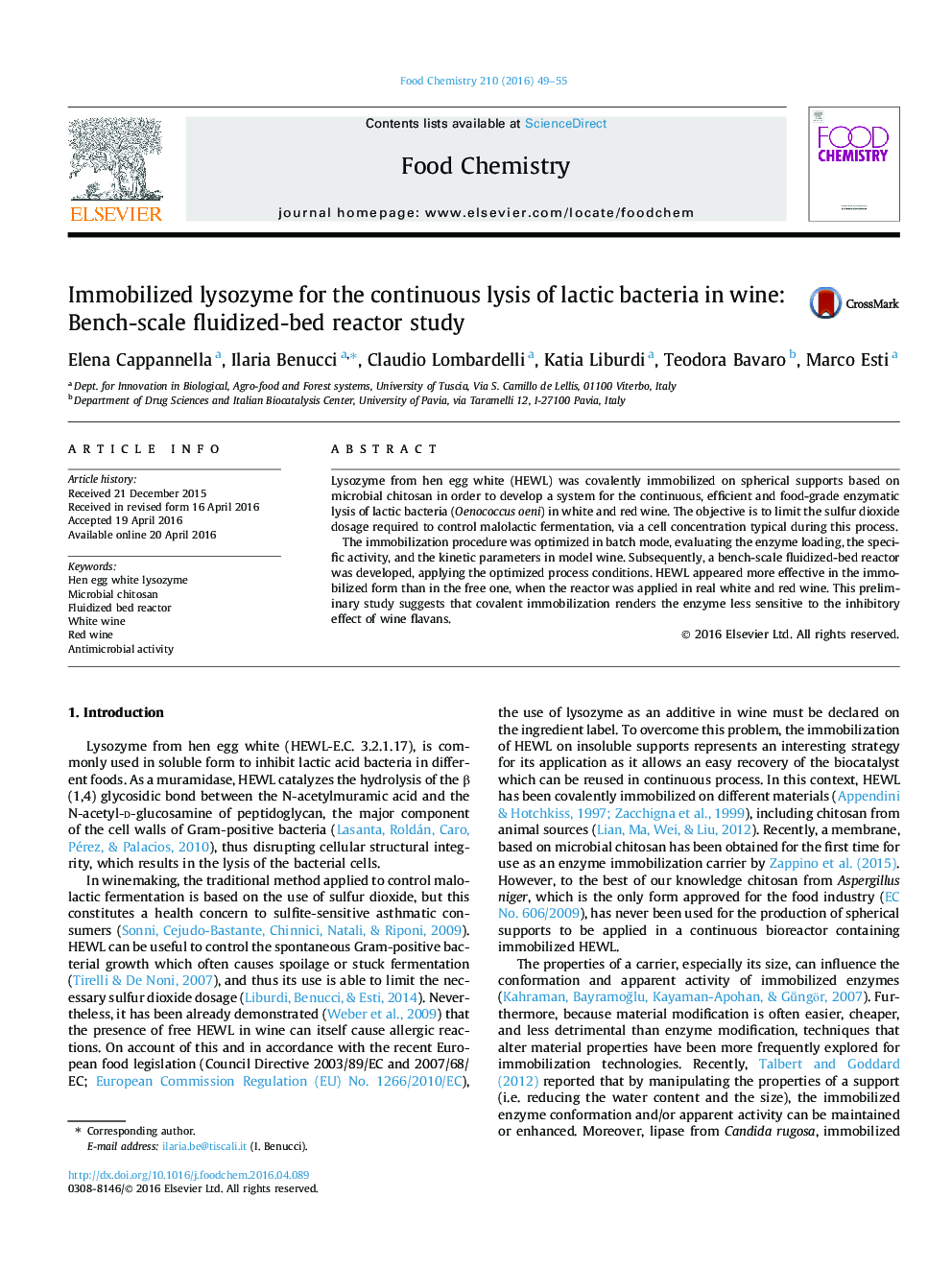| Article ID | Journal | Published Year | Pages | File Type |
|---|---|---|---|---|
| 7588005 | Food Chemistry | 2016 | 7 Pages |
Abstract
The immobilization procedure was optimized in batch mode, evaluating the enzyme loading, the specific activity, and the kinetic parameters in model wine. Subsequently, a bench-scale fluidized-bed reactor was developed, applying the optimized process conditions. HEWL appeared more effective in the immobilized form than in the free one, when the reactor was applied in real white and red wine. This preliminary study suggests that covalent immobilization renders the enzyme less sensitive to the inhibitory effect of wine flavans.
Related Topics
Physical Sciences and Engineering
Chemistry
Analytical Chemistry
Authors
Elena Cappannella, Ilaria Benucci, Claudio Lombardelli, Katia Liburdi, Teodora Bavaro, Marco Esti,
